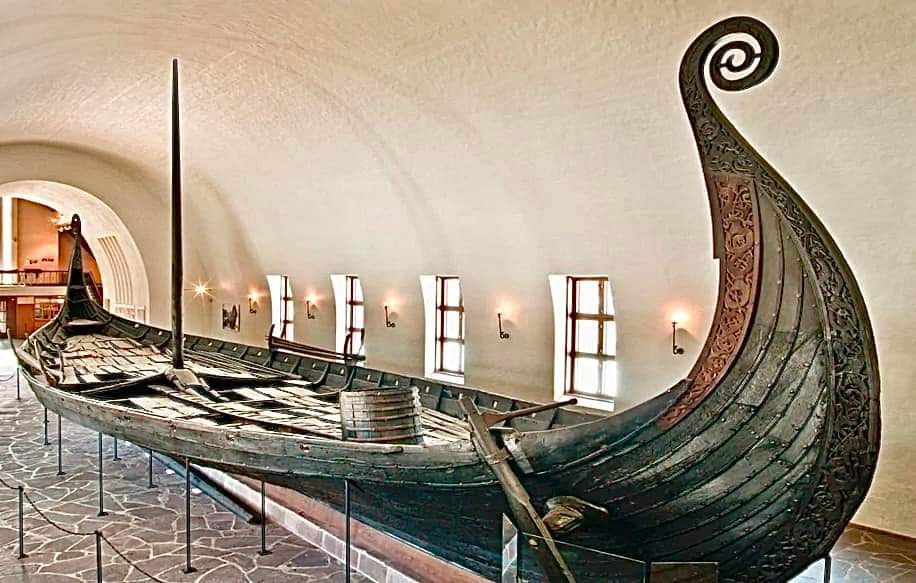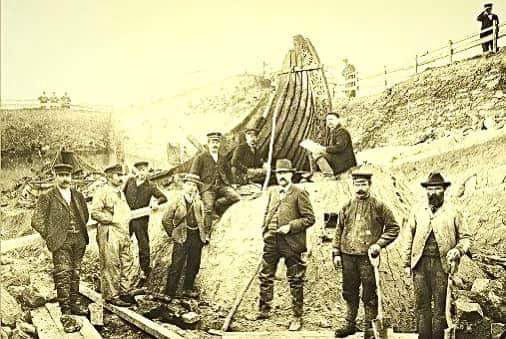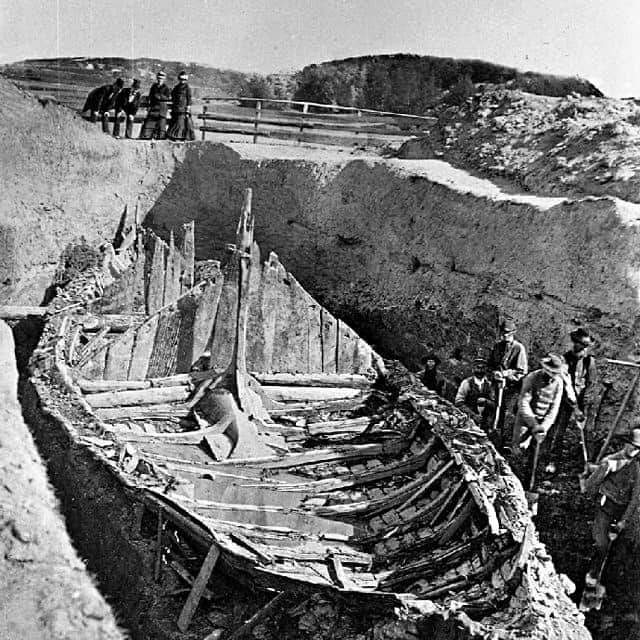OSEBERG SHIP, around A.D. 800, Viking Ship Museum, Norway
OSEBERG SHIP, around A.D. 800, Viking Ship Museum, Norway.
- The Oseberg ship is a one of the most well preserved Viking ship discovered in a large burial mound at the Oseberg farm near Tønsberg in Vestfold county, Norway. This ship is commonly acknowledged to be among the finer artifacts to have survived from the Viking Era.
- Excavation of the ship from the Oseberg burial mound was undertaken by Swedish archaeologist Gabriel Gustafson and Norwegian archaeologist Haakon Shetelig in 1904–1905. The grave also contained two female human skeletons as well as a considerable number of grave goods. Scientific dating of the ship suggests it was buried no earlier than 834, although certain parts of its structure date from as early as 800, while other parts may be even older.
- The ship is a Karve, clinker built, almost entirely of oak. It is 21.58 metres (70.8 ft) in length and 5.10 metres (16.7 ft) broad, with a mast of approximately 9–10 metres (30–33 ft) in height. With a likely sail area of 90 square metres (970 sq ft), the ship could have achieved a speed up of up to 10 knots. The ship has 15 pairs of openings for oars, enabling up to 30 people to row it. Other fittings include a broad steering oar, iron anchor, gangplank, and a bailer. The bow and stern of the ship are elaborately decorated with complex woodcarvings in the characteristic "gripping beast" style, also known as the Oseberg style.
It took 21 years to restore the ship and the finds.






